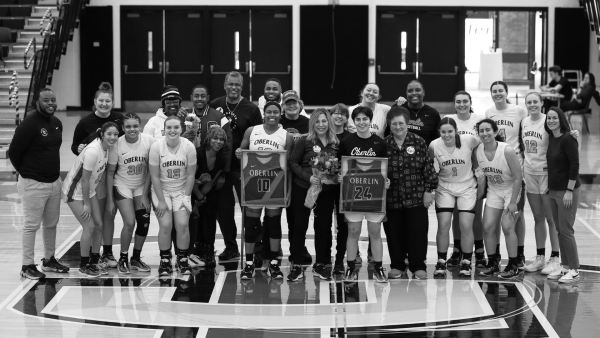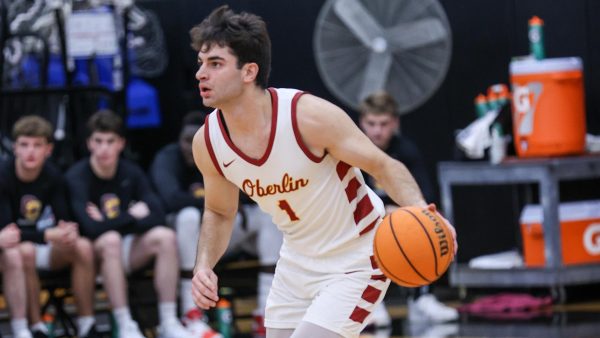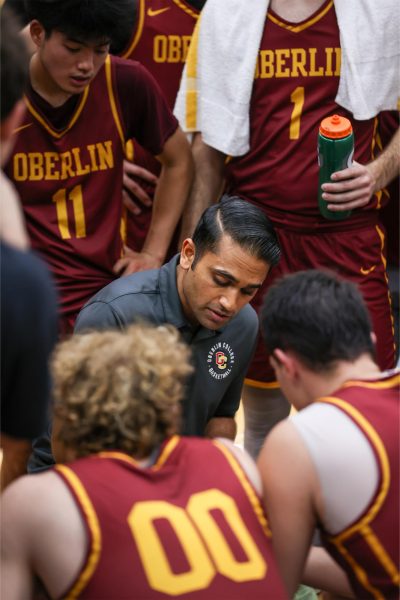Change Coming for NCAA Women’s March Madness, Predictions for Sweet Sixteen
After a hectic first and second round in the Women’s NCAA March Madness tournament, there is some calm before the next round, the Sweet Sixteen.
The first round saw six upsets and some excellent plays. In a game against Montana State University, Fran Belibi of Stanford University became the third woman to dunk in a March Madness game. Using a stifling defense, No. 12 seed Belmont University upset No. 5 seed University of Oregon in double overtime — the first double overtime in a March Madness tournament since 2013. Led by guards Abby Meyers and Kaitlyn Chen with a combination of 46 points, No.11 seed Princeton University added to their 18-game winning streak to upset No. 6 seed University of Kentucky, the defending Southeastern Conference Champion. The Tigers fought fiercely in the second round but fell to No. 3 seed Indiana University by just one point.
Madness continued in the second round, starting with No. 10 seed Creighton University upsetting the No. 2 seed University of Iowa. In bitter irony, Lauren Jensen, an Iowa transfer, shot the winning three pointer in front of a large crowd of Hawkeye fans. Olivia Miles, the freshman standout from No. 5 seed University of Notre Dame, helped the Fighting Irish beat No. 4 seed University of Oklahoma in a 108–64 victory, one of the top performances by a lower seeded team. And finally, the No. 10 seed University of South Dakota took down No. 2 seed Baylor University after hitting eight of 16 three pointers and securing many defensive rebounds. Both tactics ended the Bear’s 12-year Sweet Sixteen streak. Cinderella teams South Dakota and Creighton will be dancing in the Sweet Sixteen for the first time in their school histories.
Compared to the first and second rounds, I don’t think there will be as many upsets in the Sweet Sixteen. Despite some shakiness and underperformances in previous rounds, I think top-ranked teams such as the University of Connecticut, the University of South Carolina, and the University of Louisville will continue dancing, and I’m excited to see some of my favorite players such as Aliyah Boston, Hailey Van Lith, and Azzi Fudd make some madness. However, I think South Dakota has a very good chance of continuing their Cinderella run and upsetting the University of Michigan since they’re clearly underranked by the committee.
Before the madness begins again, I think it’s important for people to recognize how far the women’s tournament has come recently. Change recently began happening within the NCAA during the 2021 tournament, when Sedona Prince, a redshirt junior for the University of Oregon, recorded a video highlighting the disparities between the men’s and women’s weight rooms that went viral. While a Stanford trainer had already called attention to this issue, the NCAA dismissed the concern saying there wasn’t enough space. Prince’s viral video panned out to an empty weight room, ending with them saying “if you aren’t upset about this problem, then you are a part of it.” The video received millions of views on social media, and the NCAA upgraded the women’s weight room soon after. Prince became an overnight trailblazer for gender equity in college athletics.
Although Oregon was eliminated by Lousiville in the Sweet Sixteen that year, people continued to pay attention to Women’s March Madness. Viewership increased and reached broadcast records while viewership for some men’s tournaments plummeted. After Prince’s video, the NCAA also launched an investigation and implemented some additional changes that can be seen in the tournament. March Madness branding was used for the women’s tournaments for the first time, and the competition was expanded to 68 teams. Another video made by Prince this year showed that the players’ swag bags improved in quality. Separately, the NCAA has also adopted an interim name, image, and likeness policy, meaning that student-athletes can now get sponsorships.
When watching sports, it feels like people see athletes and coaches as superhuman rather than actual people with thoughts and feelings. But now more than ever, it’s time for all of us to not define athletes and coaches by their statistics, but to also recognize their advocacy and the boundaries they’re breaking.
For instance, Prince, who is a lesbian, uses TikTok to talk openly about her sexuality. Additionally, Prince and other athletes such as Azzi Fudd from UConn and Angel Reese from University of Maryland have partnered with the retirement fund TIAA for their #RetireInequality campaign.
UConn superstar Paige Bueckers honored and uplifted Black female athletes in her 2021 ESPYS speech and called out the disparities in representation. Additionally, Bueckers is donating $1,000 for every assist she makes to Youthprise, an organization that helps low income youth in Minneapolis. ESPN commentators Carolyn Peck and Courtney Lyle held a moment of silence for multiple games in protest against the “Don’t Say Gay” bill in Florida. After Adia Barnes of the University of Arizona and Dawn Staley of South Carolina made history as the first Black female head coaches to reach the Final Four in 2021, 12 Black female coaches headed into this year’s March Madness. That’s double the number from the previous year’s tournament.
As one of the millions inspired by Sedona Prince’s courage, I’m urging everyone, especially Men’s March Madness fans, to pay more attention to the athletes competing in the Women’s March Madness tournaments.
There’s still a lot of progress left; Women’s March Madness games still aren’t available on the NCAA website while the men’s are, and comments sections are still littered with sexist remarks. Athletes in the Women’s March Madness tournaments deserve more support and respect on and off the court for their hard work and advocacy, even if the NCAA is hesitant to give it.
You can watch the Sweet Sixteen and more on the ESPN family of networks and FuboTV.






